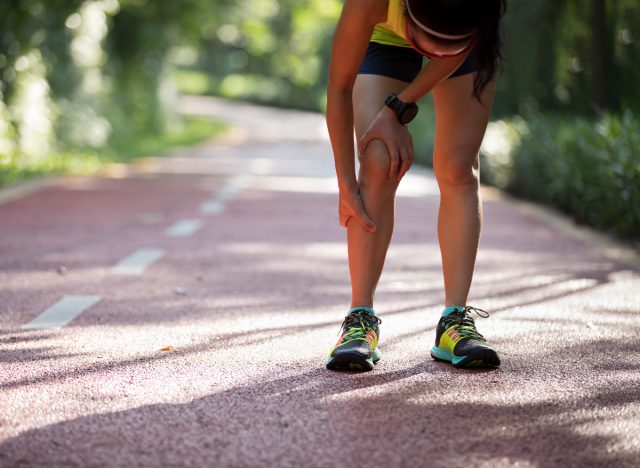Running is an excellent way to improve your aerobic fitness. In general, getting in regular cardio is a stellar way to slim down, get toned, and bump up your fat burn. However, if you want really maximize the results from your running workouts, I recommend implementing a few additional strategies. The following are five of my top running tips for weight loss. It’s time to lace up your running shoes, and get ready for the calorie burn. And next up, don’t miss Exercise Habits for Weight Loss That Science Says Actually Work.


The first of these running tips for weight loss has to do with interval training. Instead of doing one 20-minute run at a steady pace, consider adding intervals throughout your cardio session. Essentially, this involves running faster for brief periods of time, then running at a slower period to recover, rather than holding out somewhere in the middle-intensity range.
Interval training has the benefit of increasing the calories you burn after the workout by boosting your metabolism. That way, you get more bang for your buck with the time you spend running.


Rather than doing a long run one to two times per week, consider doing more frequent but shorter runs. This will help keep your metabolism fired up each day and allow your body to better recover and build up your muscles and tendons to handle longer runs. Shorter versus longer runs are relative and will of course depend on your current running ability. However, generally speaking, you will be better off with more days of exercise, even if it means shorter individual workouts.


If you plan on running longer than 30 minutes, it’s recommended to bring some form of hydration into the mix. Electrolyte drinks are fine, although if you are looking to lose weight, you should stick with calorie-free beverages. If you are running longer than an hour, it’s definitely important to replenish your electrolytes. Thankfully, there are many sugar-free electrolyte drinks on the market.
READ RELATED: Stop tying yourself in knots: what stress does to your body – and how to beat it


If you want to eat high glycemic carbohydrates, the best time to do so from a fat loss perspective is around your workouts. The insulin and sugar spike will be used by your body during the exercise, which counteracts many of the negative weight gain effects of high glycemic carbs before bedtime, as an example. As such, if you do plan to indulge in some faster-digesting carbs and sugar, do so within one hour before or after your workout.


Paved concrete and asphalt are very common materials for running and walking paths. However, running excessively on pavement puts you at greater risk of tendonitis and other chronic issues in the feet, knees, and hips, when compared to running on softer surfaces such as trails, turf, or general unpaved dirt.
You can safely run on pavement if you build up slowly and do not overdo it. But in my experience, finding a great running trail outdoors is the best option to ensure you remain injury-free and able to get in your strides, which is key to long-term weight loss from running.
Tyler Read
Source:









